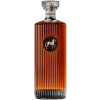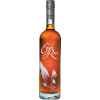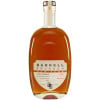About Johnnie Walker Blenders' Batch Wine Cask Blended Scotch Whisky
In 1857, Alexander Walker — Johnnie Walker's eldest son — inherited the store and began improving its selection of single malt Scotch whiskies. Alexander had previously apprenticed with a tea merchant in Glasgow and there, had learned the art of blending tea. Under his stewardship, the House of Walker began blending whisky and bottling it in an iconic, square bottle adorned with a slanted label. In addition, Walker began crafting exclusive Scotch whiskies for employees and private gatherings — treasured whiskies that were only shared with a select few groups on special occasions.
This Blenders' Batch Wine Cask whisky is a blend from the Cameronbridge and Clyenlish distilleries, aged in wine casks. The blend is a new lighter style from Johnnie Walker’s Blenders' Batch series hand crafted with passion by expert blender Aimee Gibson. “Aimee Gibson has spent the last two years working with an inventory of whiskies matured in wine casks, part of an experiment in maturation set in motion by her boss, Mast Blender Jim Beverage, almost a decade ago. Aimee realized that a very special common theme of enchanted flavors was possible from the use of wine casks” (producer).
Pick up your bottle today!
About Johnnie Walker
Johnnie Walker, one of the most widely distributed brands of blended Scotch whisky in the world, originated in the Scottish burgh of Kilmarnock in East Ayrshire. The story of the brand starts with John Walker, who started a profitable groceries business with the inheritance from his father. John Walker, himself a teetotaler, found his competitive edge in whiskies he blended himself, offering his customers a consistent product, unlike most other grocers, who usually sold a line of single malts that were never all that consistent. Whisky represented about eight percent of the sales when John’s son Alexander Walker took over the business after his father’s death in 1857, and when the company was passed on to the third generation, this share was already between 90 and 95 percent. The legalization of the blending of grain and malt whiskies by the Spirits Act of 1860 marked the beginning of the modern blended Scotch whisky. Johnnie Walker's first commercial blend, called Old Highland Whisky, was launched in 1867. Alexander Walker also introduced the brand's signature square bottle, and the distinctive slanted label. In 1893, the Walkers acquired the Cardhu distillery, and kept expanding through the early 20th century by buying interests in a number of distilleries. This ensured the company a steady supply of whiskies for its blends. By 1909, John's grandsons George and Alexander II had expanded the line, and sold three blended whiskies.
In 1909, the company rebranded its whiskies, introducing the famous striding man logo and renaming the blends after the colors of their labels. By 1920, Johnnie Walker could be bought in 120 countries. The company joined Distillers Company in 1925, and, after its acquisition by Guinness, and Guinness’s subsequent merger with Grand Metropolitan, the brand is now owned by Diageo.
About Scotch
Scotch is the most popular whisky in the world and is considered the king of them all! There are five whisky regions in Scotland (six if you count the not officially recognized Islands), and each of them produces spirits with unique properties and distinct tasting notes. (The type of grain used determents the type of the scotch.)
Malt whisky is made of malted barley, and grain whisky uses other grains like corn or wheat. Most of the time, a whisky is blended from different distilleries hence the name blended scotch, but if a malt whisky is produced in a single distillery, we get something extraordinary called a single malt.
Check out our impressive selection of scotch whiskies, find your new favorite in the Top 10 scotch whiskies, or explore our treasury of rare & hard to find scotch whiskies.











